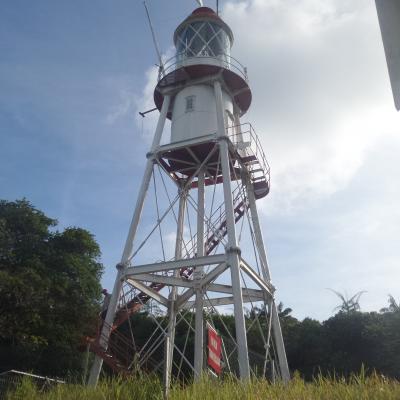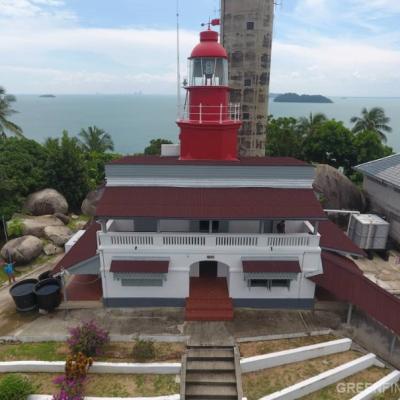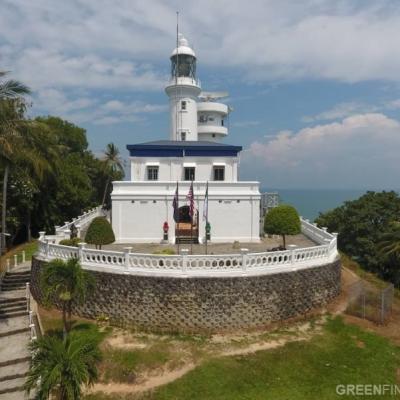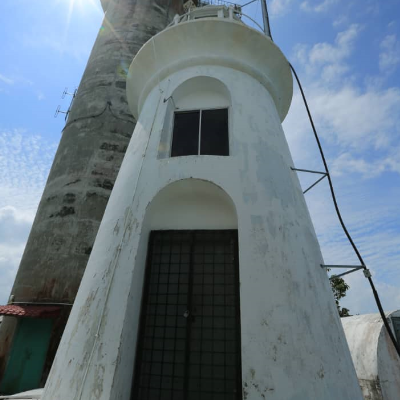
The R40 Base Station from Saab is the main component of a Physical AIS Shore Station as defined by IALA. Its main purpose is to receive data from and transmit data to AIS-equipped vessels, traveling within the coverage area of the Base Station. This will give the possibility to monitor and follow ships’ movements in an efficient way.
The R40 is installed either stand-alone or integrated into a network, such as the market-leading Saab AIS Network. Product variants exist for:
- Full version, including all features, e.g. Redundant configuration AtoN functions and all options as specified in the IEC standard.
- The standard version, meeting all requirements in the IEC standard.
- Receive-only version.
- Repeater version.
- Secure version, allowing the user to transmit and receive encrypted messages.
Features
The R40 AIS Base Station from Saab TransponderTech is the result of our on-going efforts to enhance all of our products. The unit also includes an embedded Base Station Controller (BSC) that is used for monitoring and configuration, as well as connecting to Ethernet LAN. With the R40, Saab TransponderTech continues to hold its leadership in AIS technology. The R40 is, of course, compliant with the R&TTE Directive and is like its predecessors' type approved by BSH with reference to AIS Base Station Standard IEC 62320-1. The R40 AIS Base Station is the main component of a Physical AIS Shore Station as defined by IALA. Its main purpose is to receive data from- and transmit data to AIS-equipped vessels, traveling within the coverage area of the Base Station. This enables the monitoring of ships´ movements and status in real-time. The R40 can either be installed as stand-alone or be integrated into a network, such as the market-leading AIS Network and the CoastWatch AIS monitoring and control suite by Saab.
- Type approved by BSH according to IEC 62320-1 test specification for AIS Base Stations
- Type approved by BSH according to IEC62320-3 test specification for AIS Repeater
- Compliant with R&TTE Directive
- The fourth generation of AIS Base Station from Saab using the latest technology
- Excellent performance and reliability through joint development with airborne products
- Supports fully redundant configurations by advanced embedded Hot Standby functionality
- Full remote configuration and monitoring
- Advanced Windows-based configuration and monitoring tool software included
- Selected by the majority of Maritime administrations and Port Operators throughout the world
The R40 base station main characteristics
-
A transceiver that uses Software Defined Radio (SDR) technology, which grants for high performance and stability as well as the possibility to include future upgrades
-
Outstanding receiver sensitivity: Better than -112 dBm
-
Embedded Base Station Controller, enhancing functionality and flexibility
-
MTBF >100 000 hours
-
Reception and transmission of all applicable AIS messages
-
Internal memory for storage of data, variable size up to hundreds of GB
-
Built-in Web Server
-
AD-converter
-
SNMP support
Design and features
Built-In web-server for monitoring and control
The R40 has a built-in web server that allows the user to connect to the R40 via a standard WEB-browser. It allows for quick and easy access to monitoring functions such as alarms, GPS functionality, VDL link status, etc. Furthermore it is also used for software loading and configuration etc.
External timing
IRIG-B 003 The R40 can use an external UTC source, in order to facilitate installations where the internal GPS cannot be used for synchronization or where a synchronization backup is required. The external UTC source can either provide a 1 PSS signal and NMEA time messages or it can be an IRIG-B 003 digital time signal. The IRIG-B 003 format is internationally recognized to provide accurate and consistent timing information.
Ad-converter
The built-in AD converter allows for the connection of external equipment, e.g. sensor for temperature, humidity, wind speed or battery monitoring. The values read are available on the Ethernet port.
Internal memory for temporary storage
The R40 includes built-in non-volatile memory for the temporary storage of VDL and status data. This function is used in the base station temporarily loses its connection to the AIS network. When the network connection is restored, the temporarily stored data are automatically transferred from the internal base station memory to the AIS network for storage in a database. The data transfer is a mix of real-time information and stored data. Real-time data has the highest priority and stored data are transferred when there is available capacity on the network connection. The standard size of internal storage memory is 4 GB FLASH but can be expanded to several hundred GB. A memory of 4 GB gives a storage capacity of approximately 45 days assuming an average VDL load of 40%.
Status monitoring via SNMP
The R40 is an SNMP enabled device that allows it to be remotely monitored by an SNMP Manager. The SNMP agent is embedded in the R40. Properties that can be monitored in the base station are alarms status, input voltage, channel load, used satellites, number of satellites found, hot-standby status, connection state, etc.
Typical site installation
The R40 is designed for the highest availability and reliability, resulting in high performance and long trouble-free operation. Additionally, it is possible to connect two R40 in a Hot Standby configuration without adding any extra hardware. Several important parameters are continuously evaluated in order to monitor the status of the units. This includes, for example, VSWR and VHF transmission data. The standby unit immediately takes over if a fault is discovered.
Configuration & monitoring
The R40 incorporates an advanced web server used for monitoring and configuration of the R40 AIS Base Station. Examples of operations performed are configuration, upload of new software and monitoring of base station status.
PSS tool
The R40 is also delivered with a configuration and monitoring software, PSS Tool, which for example provides a graphical view of the AIS VDL Link displaying sent/received messages and reservations. The user can select specific slots to view detailed information on what unit is using the slot and the type of message.










